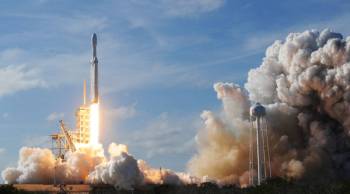How does NASA get to Mars? By capturing an asteroid
In the 1998 movie “Armageddon,” NASA discovers an asteroid on a collision course with Earth. It sends a spaceship armed with Bruce Willis out to greet the threat.
This year, the real NASA announced it wants to grab an asteroid of its own — but not to save the planet.
“Ultimately our goal is to go to Mars,” says Robert Lightfoot, NASA’s associate administrator. “Going to an asteroid is the next real logical step to go do that.”
It may not be as bold as John F. Kennedy’s pledge to put a man on the moon, but President Obama is promoting his own space odyssey: To land astronauts on an asteroid by 2025. Then reach Mars in the following decade.
Under NASA’s current plan, a robotic spaceship would travel to a small asteroid and place a bag-like structure around it as the rock hurtles and spins through space. The craft would then drag the asteroid to the moon’s orbit, close enough to Earth for astronauts to fly out and visit.
Lightfoot says the goal is test deep-space technologies that NASA would need for a trip to the Red Planet. And, all this on an asteroid about the size of a school bus.
Congress may not buy into the mini-asteroid mission.
“It seems to me, it’s not a good use of the taxpayer’s dollars,” says Republican Rep. Lamar Smith, chairman of the House Committee on Science, Space, and Technology. “It doesn’t help us get to Mars, and it doesn’t really help us learn more about large asteroids that we might want to deflect. So it just doesn’t serve any purpose.”
A Senate committee approved the asteroid-capture plan this summer, but Smith’s committee stripped it from proposed NASA funding.
“This is an era of budget constraints,” he says. “This is a mission that experts say will cost $2.5 billion, so it may fall from its own weight.”
The actual price tag is a matter of debate. But whatever the bill, private companies might be willing to help NASA out — if they get what they want. They want to park themselves on asteroids, to mine metals, hydrogen and oxygen. Space companies would use these natural resources to make rocket fuel and spare parts, which could service spaceships on their way, for instance, to Mars.
“It’s an oasis and a gas station in all in one,” says Rick Tumlinson, a founder of Deep Space Industries, a futuristic mining company. The company’s website proclaims: “It is time to begin the harvest of space.”
Tumlinson says NASA could offset its asteroid-program costs by partnering with private companies.
“We can not only do it far cheaper,” he says. “We can also begin to create a new economy that develops new resources and new jobs and begins to inject new wealth back here into the world.”
Deep Space Industries and Planetary Resources, another asteroid mining company, are to present their ideas at a NASA workshop later this month. Congress will vote on NASA’s 2014 budget later this fall.
There’s a lot happening in the world. Through it all, Marketplace is here for you.
You rely on Marketplace to break down the world’s events and tell you how it affects you in a fact-based, approachable way. We rely on your financial support to keep making that possible.
Your donation today powers the independent journalism that you rely on. For just $5/month, you can help sustain Marketplace so we can keep reporting on the things that matter to you.


















